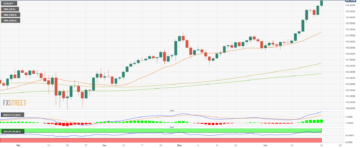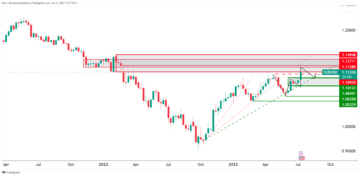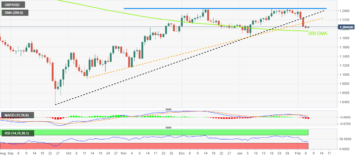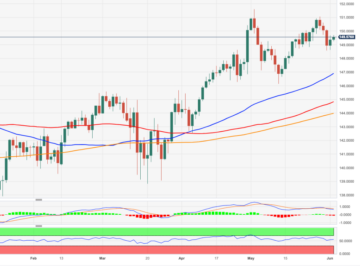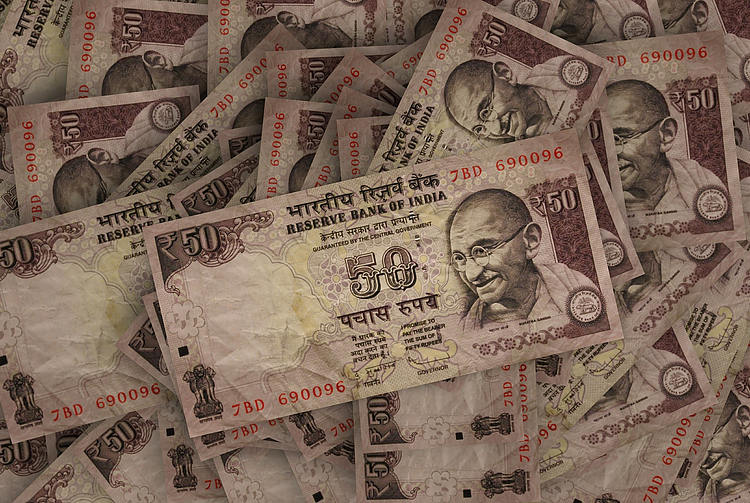
- Indian Rupee gains traction amid the weaker US Dollar.
- The currency might benefit from inflows since MSCI increased India’s weight in its Emerging Market index effective from November 30.
- Investors await the US Gross Domestic Product Annualized data for the third quarter (Q3), due later on Wednesday.
Indian Rupee (INR) gathers strength on Wednesday on the foreign banks’ Dollar sales and a weaker US Dollar (USD). The Indian economy is projected to expand by over 6% this year, bringing its Gross Domestic Product close to $4 trillion. Additionally, India’s economy is anticipated to be the fastest-growing on the globe in the coming years, according to the International Monetary Fund (IMF).
The Indian Rupee potentially benefits from equities inflows due to MSCI’s decision to increase India’s weight in its Emerging Market index effective from November 30 and analysts expect equity inflows worth $1.5 billion this week. Nonetheless, the rebound in crude oil prices might cap the INR’s upside. It’s worth noting that India is particularly vulnerable to higher crude prices as the country is the world’s third-biggest oil consumer.
Market players will monitor the US Gross Domestic Product Annualized for the third quarter (Q3) on Wednesday, which is expected to expand 5.0%. Later this week, the attention will shift to India’s Gross Domestic Product (GDP) Quarterly for the second quarter (Q2), due on Thursday. Furthermore, the last phase of state elections on Thursday remains in focus as a change in government might result in modifications to current policies, which have an impact on investors.
Daily Digest Market Movers: Indian Rupee remains under pressure amid multiple headwinds
- S&P Global Ratings raised India’s growth forecast for the current financial year to 6.4% from 6.0%, citing robust domestic momentum that has offset headwinds from high food inflation and sluggish exports.
- Analysts estimate that India’s GDP will grow higher than 6.0% next year, making it the fastest-growing major economy.
- The Reserve Bank of India (RBI) estimated 6.5% growth for July–September, with RBI Governor Shaktikanta Das projecting an upward surprise.
- US CB Consumer Confidence for November climbed to 102.00 versus a downward revision to 99.1.
- Richmond Fed Manufacturing Index showed activity slowed in November, falling to -5.0 from 3.0 in October.
- The S&P/Case-Shiller Home Price Index grew 3.9% YoY in September versus 2.1% prior, below the market consensus of 4.0%.
- Federal Reserve (Fed) Governor Christopher Waller said the central bank won’t need to raise rates further and may begin cutting rates if inflation continues to ease over the next three to five months.
Technical Analysis: The Indian Rupee keeps a positive outlook unchanged
The Indian Rupee trades firmer on the day. The USD/INR pair has traded in a familiar range of 82.80–83.40 since September. USD/INR maintains a bullish vibe as the pair holds above the key 100-day Exponential Moving Average (EMA) on the daily chart. The upward momentum is supported by the 14-day Relative Strength Index (RSI) that holds above the 50.0 midline, reflecting that further upside looks favorable.
The upper boundary of the trading range at 83.40 will be the immediate resistance level for the pair. Further north, the next hurdle to watch is the year-to-date (YTD) high of 83.47, en route to a psychological round figure of 84.00. On the downside, the key contention level will emerge at the 83.00 psychological mark. A breach below this level will pave the way to the confluence of the lower limit of the trading range and a low of September 12 at 82.80, followed by a low of August 11 at 82.60.
US Dollar price in the last 7 days
The table below shows the percentage change of US Dollar (USD) against listed major currencies in the last 7 days. US Dollar was the strongest against the Japanese Yen.
| USD | EUR | GBP | CAD | AUD | JPY | NZD | CHF | |
| USD | -0.77% | -1.34% | -1.11% | -1.28% | -0.61% | -2.19% | -0.76% | |
| EUR | 0.76% | -0.57% | -0.33% | -0.50% | 0.16% | -1.42% | 0.00% | |
| GBP | 1.32% | 0.57% | 0.24% | 0.08% | 0.72% | -0.84% | 0.56% | |
| CAD | 1.09% | 0.34% | -0.24% | -0.16% | 0.49% | -1.08% | 0.33% | |
| AUD | 1.25% | 0.50% | -0.07% | 0.16% | 0.64% | -0.91% | 0.48% | |
| JPY | 0.60% | -0.16% | -0.74% | -0.47% | -0.65% | -1.59% | -0.16% | |
| NZD | 2.14% | 1.40% | 0.83% | 1.07% | 0.91% | 1.55% | 1.40% | |
| CHF | 0.75% | 0.01% | -0.57% | -0.33% | -0.50% | 0.15% | -1.42% |
The heat map shows percentage changes of major currencies against each other. The base currency is picked from the left column, while the quote currency is picked from the top row. For example, if you pick the Euro from the left column and move along the horizontal line to the Japanese Yen, the percentage change displayed in the box will represent EUR (base)/JPY (quote).
Indian economy FAQs
The Indian economy has averaged a growth rate of 6.13% between 2006 and 2023, which makes it one of the fastest growing in the world. India’s high growth has attracted a lot of foreign investment. This includes Foreign Direct Investment (FDI) into physical projects and Foreign Indirect Investment (FII) by foreign funds into Indian financial markets. The greater the level of investment, the higher the demand for the Rupee (INR). Fluctuations in Dollar-demand from Indian importers also impact INR.
India has to import a great deal of its Oil and gasoline so the price of Oil can have a direct impact on the Rupee. Oil is mostly traded in US Dollars (USD) on international markets so if the price of Oil rises, aggregate demand for USD increases and Indian importers have to sell more Rupees to meet that demand, which is depreciative for the Rupee.
Inflation has a complex effect on the Rupee. Ultimately it indicates an increase in money supply which reduces the Rupee’s overall value. Yet if it rises above the Reserve Bank of India’s (RBI) 4% target, the RBI will raise interest rates to bring it down by reducing credit. Higher interest rates, especially real rates (the difference between interest rates and inflation) strengthen the Rupee. They make India a more profitable place for international investors to park their money. A fall in inflation can be supportive of the Rupee. At the same time lower interest rates can have a depreciatory effect on the Rupee.
India has run a trade deficit for most of its recent history, indicating its imports outweigh its exports. Since the majority of international trade takes place in US Dollars, there are times – due to seasonal demand or order glut – where the high volume of imports leads to significant US Dollar- demand. During these periods the Rupee can weaken as it is heavily sold to meet the demand for Dollars. When markets experience increased volatility, the demand for US Dollars can also shoot up with a similarly negative effect on the Rupee.
- SEO Powered Content & PR Distribution. Get Amplified Today.
- PlatoData.Network Vertical Generative Ai. Empower Yourself. Access Here.
- PlatoAiStream. Web3 Intelligence. Knowledge Amplified. Access Here.
- PlatoESG. Carbon, CleanTech, Energy, Environment, Solar, Waste Management. Access Here.
- PlatoHealth. Biotech and Clinical Trials Intelligence. Access Here.
- Source: https://www.fxstreet.com/news/usd-inr-loses-traction-on-the-weaker-dollar-us-gdp-data-eyed-202311290332
- :has
- :is
- :where
- ][p
- $UP
- 1
- 102
- 11
- 12
- 2006
- 2023
- 30
- 32
- 33
- 39
- 40
- 41
- 50
- 60
- 7
- 80
- 84
- a
- above
- According
- activity
- Additionally
- against
- aggregate
- ahead
- along
- also
- Amid
- an
- analysis
- Analysts
- and
- Animate
- annualized
- Anticipated
- ARE
- AS
- At
- attention
- attracted
- AUGUST
- average
- await
- Bank
- Bank of India
- Banks
- base
- BE
- begin
- below
- benefit
- benefits
- between
- Billion
- Box
- breach
- bring
- Bringing
- Bullish
- by
- CAN
- cap
- CB
- central
- Central Bank
- change
- Changes
- Chart
- Christopher
- Christopher Waller
- citing
- Climbed
- Close
- Column
- coming
- coming years
- complex
- confidence
- confluence
- Consensus
- consumer
- content
- continues
- country
- credit
- crude
- currencies
- Currency
- Current
- cutting
- daily
- data
- day
- Days
- deal
- decision
- DEFICIT
- Demand
- difference
- Digest
- direct
- displayed
- Dollar
- dollars
- Domestic
- down
- downside
- downward
- due
- during
- each
- ease
- economy
- effect
- Effective
- Elections
- EMA
- emerge
- emerging
- emerging market
- ends
- equity
- especially
- estimate
- estimated
- EUR
- Euro
- example
- Expand
- expanded
- expect
- expected
- experience
- exponential
- exponential moving average
- exports
- Fall
- Falling
- familiar
- FAQ
- fastest
- fastest growing
- favorable
- Fed
- Figure
- financial
- five
- fluctuations
- Focus
- followed
- food
- For
- Forecast
- foreign
- foreign investment
- from
- fund
- funds
- further
- Furthermore
- Gains
- gasoline
- GDP
- Global
- globe
- Government
- Governor
- great
- greater
- grew
- gross
- Grow
- Growing
- Growth
- Have
- headwinds
- heavily
- High
- higher
- history
- holds
- Home
- Horizontal
- HTTPS
- hurdle
- if
- IMF
- immediate
- Impact
- import
- imports
- in
- includes
- Increase
- increased
- Increases
- index
- india
- Indian
- indicates
- indicating
- inflation
- inflows
- interest
- Interest Rates
- International
- international investors
- international monetary fund
- International Monetary Fund (IMF)
- International Trade
- into
- investment
- Investors
- IT
- ITS
- Japanese
- Japanese Yen
- jpg
- Key
- Last
- later
- Leads
- left
- Level
- LIMIT
- Line
- Listed
- LOOKS
- Lot
- Low
- lower
- maintains
- major
- Majority
- make
- MAKES
- Making
- manufacturing
- map
- mark
- Market
- Markets
- May..
- Meet
- might
- Modifications
- module
- Momentum
- Monetary
- money
- money supply
- Monitor
- months
- more
- most
- mostly
- move
- Movers
- moving
- moving average
- MSCI
- multiple
- Need
- negative
- next
- North
- noting
- November
- october
- of
- offset
- Oil
- on
- ONE
- or
- order
- Other
- Outlook
- outweigh
- over
- overall
- pair
- Park
- particularly
- pave
- percentage
- periods
- phase
- physical
- pick
- picked
- Place
- plato
- Plato Data Intelligence
- PlatoData
- players
- policies
- positive
- potentially
- pressure
- price
- Prices
- Prior
- Product
- profitable
- projected
- projects
- psychological
- Q2
- Q3
- Quarter
- quote
- raise
- raised
- range
- Rate
- Rates
- ratings
- RBI
- real
- rebound
- recent
- reduces
- reducing
- reflecting
- relative
- relative strength index
- Relative Strength Index (RSI)
- remains
- represent
- Reserve
- reserve bank
- Reserve Bank of India
- Resistance
- result
- Rises
- robust
- round
- Route
- ROW
- rsi
- Run
- s
- Said
- sales
- same
- seasonal
- Second
- second quarter
- sell
- September
- shift
- Shoot
- showed
- Shows
- significant
- Similarly
- since
- sluggish
- So
- sold
- starts
- State
- strength
- Strengthen
- strongest
- supply
- Supported
- supportive
- surprise
- table
- takes
- Target
- than
- that
- The
- the world
- their
- There.
- These
- they
- Third
- this
- this week
- this year
- three
- thursday
- time
- times
- to
- top
- traction
- trade
- traded
- trades
- Trading
- Trillion
- Ultimately
- under
- Upside
- upward
- upward momentum
- us
- US Dollar
- US Dollars
- US GDP
- USD
- usd/inr
- value
- Versus
- Vibe
- Volatility
- volume
- Vulnerable
- was
- Watch
- Way..
- Wednesday
- week
- weight
- when
- which
- while
- will
- with
- world
- worth
- year
- years
- Yen
- yet
- you
- zephyrnet




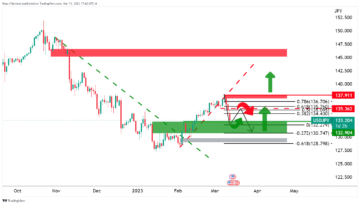
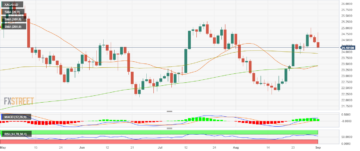
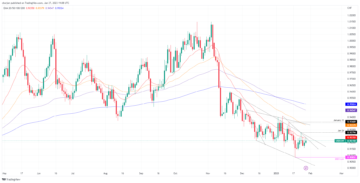
![S&P 500 pullback update: Are we nearing the light at the end of the tunnel? [Video]](https://platoaistream.net/wp-content/uploads/2023/09/sp-500-pullback-update-are-we-nearing-the-light-at-the-end-of-the-tunnel-video-360x258.png)
